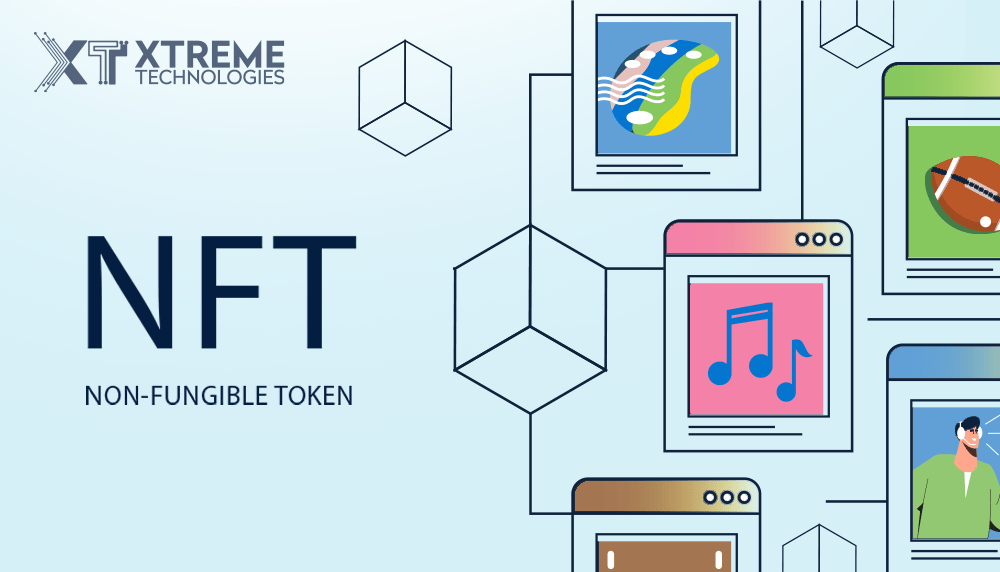
What are Non-Fungible Tokens? Everything You Need to Know About NFTs
All, NFTs,
Published on: October 15, 2021
When initially discussing NFTs, the following phrase we generally observe:
NFTs are short for "non-fungible tokens."
Isn't this a natural place to begin?
However, attempting to comprehend an NFT by expanding its acronym is like responding to the question "what is an mp3?" with "it's a MPEG Audio Layer-3."
Yes, but that explanation doesn't exactly get to the heart of the matter.
Is there a better answer? An mp3 is a file format that has dramatically transformed whole industries by altering how we exchange and consume audio.
NFTs are, indeed, "non-fungible tokens." So, yes, grasping what fungibility entails is beneficial (and we'll get to it shortly). However, it falls short of getting to the heart of the matter.
Is there a better answer?
Okay, Alright. For a Moment, Let's Go Technical about Non-Fungible Tokens.
A "fungible" asset may be exchanged for another unit of the same asset. The US dollar is a superb illustration of a fungible asset. Nothing changes if I trade my $1 bill for your $1 bill. Despite the fact that they are two distinct pieces of beautiful paper, both banknotes have the same value. That's what fungibility is.
On the other hand, is anything with a specific worth. There are no two that are precisely alike. A home or an automobile are ideal examples of non-fungible assets.
The use of a non-fungible token is when things start to get interesting. Numerous Digital Media Marketing companies are curious and eager to know NFT. This blog can be useful for them.
What is Non-Fungible Token’s Marketplace?
NFT markets are platforms for storing, displaying, trading, and, in certain circumstances, minting NFTs (created). These marketplaces are non-financial transactions that Amazon or eBay are to products.
To access and use these sorts of markets, you must have the following:
- A cryptocurrency wallet: You must select an interoperable wallet with the blockchain network that handles the NFTs you intend to purchase (below). If you want to buy or trade NFTs depending on the Ethereum blockchain platform, for instance, you'll need to utilize a compatible Ethereum wallet like MetaMask. Likewise, you must use a wallet service such as Sollet to purchase NFTs on the Solana platform.
- The number of coins in the wallet: Before purchasing, listing, or minting an NFT, you must first fund your wallet. Again, you must determine which cryptocurrencies you can utilize in the marketplace you wish to utilize.
- A user account consists of: You'll need to create an account on the marketplace to buy NFTs.
It's important to note that, in most cases, listing and generating NFTs on a marketplace platform imposes a blockchain network charge. The cost varies according to the blockchain-based system you choose. For instance, Ethereum has the most extensive ecosystem of NFT dapps (decentralized applications). However, it has the highest fees.
What's This, Digital Art?
Yes.
The now-exploding realm of NFT art is a fantastic location to start our journey into NFTs. We may now build a non-fungible token that serves as evidence of validity for any digital content. So, let's suppose I went into Photoshop and created a very great image of a smiling face. In fact, I've done just that...
Let’s say I created a happy face.
This joyful face now exists as a JPG file that I produced in Photoshop, stored on my desktop, and published to the web page for this article. You, the reader, may just drag this file to your desktop. Suddenly, there are two versions of "happy.jpg" on two distinct PCs. This can be replicated a million different ways by a million more people. Until the development of NFTs, this effectively reduced the value of digital files to near nothing. No one owns it if everyone owns it.
Read Also: Why Online Shopping Trend Is Growing? What Are The Pros Of Online Shopping?
How NFT is Captivating the Internet?
NFTs enable us to bypass the seeming contradiction between scarcity and abundance. We can finally have our cake and eat it. Content is becoming both rare and copious.
We open the way to capture the value of viral material by developing a one-of-a-kind NFT that symbolizes a potentially renowned and widely consumed file. Not necessarily through monetizing each instance of content consumption, but by the value of the original NFT increasing in tandem with the cultural relevance of its related art.
It's like holding a signed ball of LeBron James. You do not have control over LeBron James. Everyone gets to see him play basketball from all around the place. However, as LeBron's worth in basketball and society rises, so will the value of the unique signed ball you hold.
The same uses for the memes today! What a wonderful sight.
Another comparison that resonates with people — and helped me grasp everything when I first joined the world of NFTs — is the Mona Lisa.
"I can just capture the happy.jpg image!" you would think. You certainly can. However, you may also use your phone to photograph the Mona Lisa. However, you would not assert provenance over the Mona Lisa. The more individuals who share their iPhone photos of the Mona Lisa, the greater the artwork's cultural importance and the higher the value of the actual painting.
We all intuitively believe that the Louvre is home to the legitimate Mona Lisa. "The blockchain is the Louvre," remarked @whatdotcd in a previous Clubhouse session. In other words, the open and inclusive structure of a blockchain enables us to check and trust the history and provenance of digital material in almost the same way that we believe the Louvre to keep the actual Mona Lisa.
Let’s Jump into a Whole New World
This is all extremely new to us, especially since we all grew up in the original version of the Internet when we were taught to see digital material in a specific way. As a result, there is a mental leap that we must all make to comprehend these new notions and begin to fully taste their consequences for ourselves.
But don't worry, our grandkids won't have to make the same mental leap. Instead, they will live in an environment where digital information is as distinct and tangible as real items.
What happens next? I, for one, am eager to find out.
NFT Buying and Selling
NFTs are often acquired at a set price or through an auction. Prospective purchasers might sometimes submit proposals to the owner and try to negotiate a better deal.
On the other hand, selling one-of-a-kind digital assets could be a more complex process than buying them, especially if the user wants to sell something they produced themselves.
- You must submit the desired digital asset to the marketplace and select a preset price or choose to sell the NFT through an auction.
- The platform will then validate the asset. If it is accepted, it will be put up for sale.
- When the seller accepts an offer, the transaction from buyer to seller is handled by the marketplace.
NFTS Links with Secondary Market
The possibility to earn from the secondary market becomes a feature of NFT-based art that does not present in the offline art scene. When you trade your artwork offline, it's completely gone. If and when it starts selling for more, you don't actually gain much out of it.
However, in the cryptocurrency industry, you may set up a fee (typically between 5 and 10%) that you receive every time somebody turns around and sell your work. That's right; you're compensated on each resale! So, if you sell your creative piece for $1, and then someone turns around and sells it for thousands of dollars in ten years, you can still make $100,000.
This characteristic is the single most important reason why NFTs are ideal for content providers. It enables them to concentrate on creating art without being concerned about its first sale price. If their works become successful, they may make substantial sums from the secondary market in the coming years.
Read Also: 11 Ways to Grow Your Small Business through Blogging
Getting Started With Non-Fungible Tokens
It's never been simpler to get involved in the world of NFTs than it is just now. The three main markets are now OpenSea, Rarible, and Foundation. In a while, we'll look at what distinguishes each of them, but first, let's speak about how to build an NFT.
You'll need to have a Metamask first. This Google plugin acts as your digital wallet and allows you to exchange your artwork on the blockchain. It serves as a pocketbook and an e-signature inside one.
To begin, download Metamask, make an account, and then transfer some ETH to that wallet. You can easily purchase ETH using a credit card on exchanges like Coinbase, Kraken, and Binance. You can transfer it to Metamask once the contract has been concluded and you've been confirmed. This procedure can take up to 5 days, but you only need to perform it when you first start. Everything becomes simpler once you've completed that task.
Minting Non-Fungible Tokens
From the standpoint of a content producer, there has never been a better method to exhibit and monetize digital works. If you are eager and curious about blockchain, NFTs, or crypto art, then use this blog to get started right now. You may enter the market and begin growing.
Author Bio
Emily is a Business graduate from Harvard. She has got an amazing sense of humor. We love her techy jokes. Emily works with Logo Design Company as a blogger and social media manager.






Recent Comments